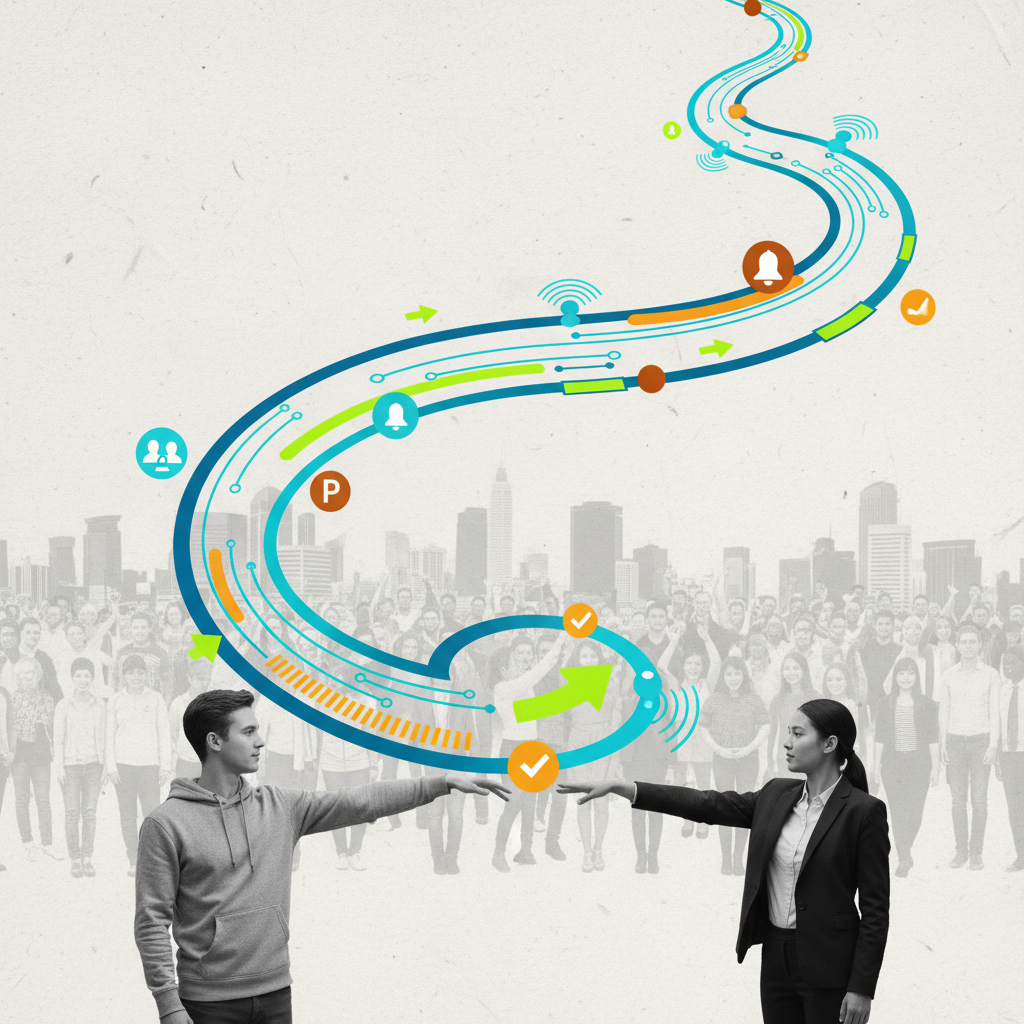Discover the exact loops top products use to turn every action into new users and growth
You’ve probably watched a product launch and thought, “How did they turn a single click into a flood of new users?” The answer isn’t magic; it’s a loop that quietly rewrites the rules of growth. Most of us are taught to chase the next acquisition channel, to throw more budget at ads, and to celebrate the first‑time visitor as a win. What we miss is the subtle choreography that turns every interaction—sign‑up, share, purchase—into its own invitation for the next person to join.
The problem isn’t a lack of data or a shortage of tools; it’s a blind spot in how we design the user journey. We see the funnel as a one‑way street, when in reality each step can be a launchpad for the next wave of users. Recognizing this shift is the difference between a product that plateaus and one that compounds its own audience.
I’ve spent years watching startups and giants alike wrestle with this paradox, and the pattern that emerges is both simple and profound. It’s time to pull back the curtain on the growth loops that power the world’s most successful products.
Let’s unpack this.
Why Growth Loops Matter More Than Funnels
Funnels have taught us to think of growth as a one‑way street: attract, convert, retain. The reality, revealed in countless case studies on Medium, is that each user action can become a catalyst for the next acquisition. When a user shares a link, writes a review, or simply uses a feature that others love, they are quietly building a new entry point for the product. This self‑reinforcing dynamic compounds over time, turning a modest user base into a viral engine without a constant ad spend.
The shift from funnel to loop changes the metric you obsess over. Instead of counting the last click before checkout, you watch for the ripple: a referral, a user‑generated content piece, a community interaction. Those ripples are the true growth currency. By redesigning the journey to surface these moments, you move from a plateau‑prone product to one that compounds its audience like interest on a savings account.
Designing Your First Self‑Sustaining Loop
Start with a single, repeatable action that creates value for both the initiator and a stranger. Think of Dropbox’s extra storage for referrals or TikTok’s “share to get more views” prompt. The loop has three parts: the trigger (the user does something), the reward (the user or a new user gains benefit), and the amplification (the action invites another user). Sketch it on a whiteboard, then ask: does each step naturally lead to the next?
A practical checklist helps: 1. Identify a core behavior that users love. 2. Attach a shareable outcome to that behavior. 3. Make the outcome valuable enough to inspire the next user to repeat the cycle. 4. Measure the loop’s velocity – how quickly does one action generate the next?
When you iterate on this framework, you’ll discover that the simplest loops—like a comment that sparks a discussion—can be more powerful than elaborate referral programs. The secret is consistency, not complexity.
Common Pitfalls and How to Avoid Them
Even seasoned builders trip over the same traps. First, treating a loop like a one‑off campaign leads to short‑lived spikes; the loop must be baked into the product’s DNA. Second, offering a reward that’s too cheap dilutes the incentive, while a reward that’s too generous erodes margins. Third, ignoring the “friction” factor – if sharing requires a login, a password reset, or a lengthy form, the loop stalls before it even starts.
Avoid these by: – Embedding the loop in a core feature, not an add‑on. – Testing reward thresholds with real users to find the sweet spot. – Reducing steps to a single tap or automatic copy‑to‑clipboard.
Product School reminds us that loops thrive on simplicity and clarity. When you strip away the noise and let the user’s natural desire to help others do the work, the loop becomes a silent growth engine that runs long after you stop shouting about it.
When you first asked how a single click can become a flood, the answer was never a hidden trick—it was a mindset shift. By treating every user action as a built‑in invitation, the product stops being a funnel and becomes a self‑sustaining loop. The real work is simple: pick the behavior users already love, attach a shareable reward that feels natural, and strip away every extra step between intention and action. Test the friction, adjust the incentive, and watch the ripple grow into its own audience. In practice, that means tomorrow you could redesign one onboarding screen so that the moment a user unlocks a feature, they can instantly share a tangible benefit with a friend. Let that moment be the seed, not the finish line. Make every interaction a seed, and the garden will take care of itself.


Leave a Reply